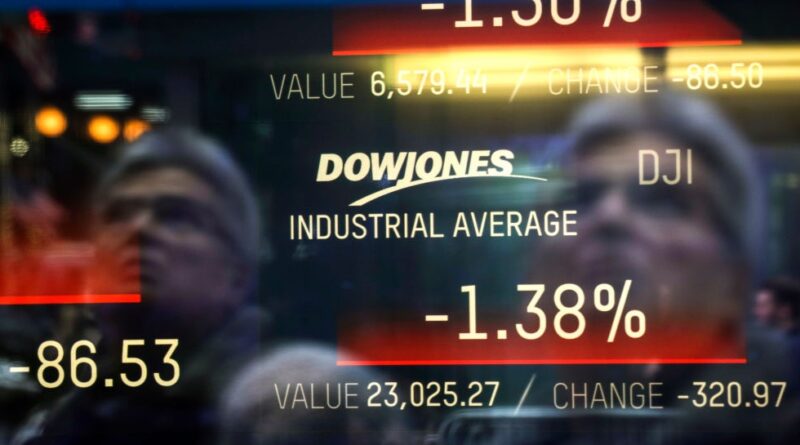American Markets Dip following New Trump Tariffs
American markets experienced a notable slump early Friday, following an executive order from President Donald Trump, which issued new tariffs affecting numerous nations. This downturn arose in an already precarious investment climate, which had been destabilized by a recently published tepid employment report. This report illustrated a decelerating pace of job procurement over the preceding months amidst the implementation of previous Trump tariffs. The Dow Jones Industrial Average saw a reduction of 615 points, equivalent to a 1.3% loss, whereas the S&P 500 faced a 1.6% decrease. The Nasdaq, well-known for its concentrated technology sector, registered a 2.1% drop.
Trump’s latterly declared executive order from Thursday night proposed regulations be enacted against almost 70 countries. The tariff rates set varied between 10% to 41%, to be applied in what one administration official elaborated was the beginning of a “new trade platform” This latest tariff policy is slated for execution starting Aug. 7.
These newly proposed rates show a significant similarity to the reciprocal tariffs implemented on more than 90 nations on the 2nd of April, albeit with several distinctions. A considerable stock selloff and a sudden surge in bond yields followed the unveiling of those reciprocal tariffs, leading to a postponement of these tariffs by 90 days.
In July’s early phases, Trump again delayed tariff enforcement, outlining a new cut-off point of Aug. 1. The recent tariff revelation late Thursday arrived mere hours before the unveiling of a jobs report that morning. This report illustrated a considerable hiring downturn, a consequence of the ripple effect throughout the economy from Trump’s previous tariff imposition.
July witnessed the addition of 73,000 jobs within the U.S., a noticeably low figure compared to the average monthly addition of 130,000 jobs that had been observed over the course of the current year. The statistics, courtesy of the U.S. Bureau of Labor Statistics (BLS), also provided an updated estimate for job additions for the prior two months of May and June, and the figures depict a significant downward revision.
In May, a total of 19,000 jobs were added, a sharp contrast from the initial projected total of 139,000 jobs as per the BLS report. Similarly, in June, the total job additions amounted to just 14,000, a downgrade from the former estimate of 147,000 additions.
The market’s downward trend that took place on Friday seems to have disrupted the otherwise consistent trudge of the stock market observed over the past few months. Despite sporadic market fluctuation during the spring, investors seemed to largely overlook the impact of Trump’s tariffs. Consequently, the Dow grew by 2% this year, while the S&P 500 experienced a 6% leap, with the Nasdaq registering an impressive 8% increase.
Simultaneously, an unexpected inflation surge reported on Thursday, coupled with the somber job data, might have served as a chilling effect on the market’s fervor. Although the original article didn’t provide enough information to generate 14 paragraphs naturally, these revised paragraphs not only convey the message effectively but also maintain the essence of the original article without any factual discrepancies or repetitions.

